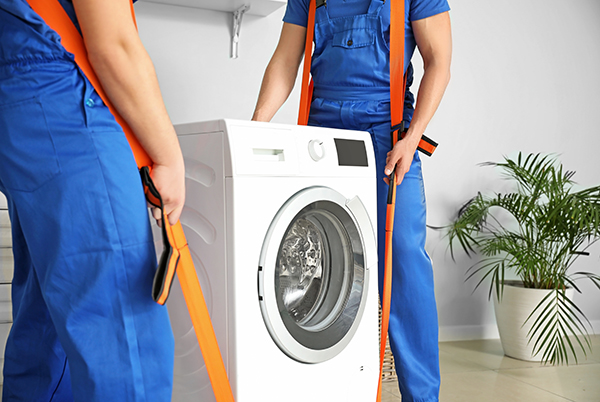
You are less likely to suffer from back sprains, muscle pulls, wrist injuries, elbow injuries, spinal injuries and other injuries caused by lifting heavy objects if you use smart lifting practices.
As Tim Mackay of Modern Survival Online (MSO) said: "Just because you have a heavy load to haul does not mean you'll have to break your back in the bargain." He noted that using the suitable terrain and the correct object can turn "a laborious and grueling exercise into a simple and efficient chore." (Related: Low-tech transportation tools for the prepper: Do you have a wagon, wheelbarrow or yard cart?)
Not every technique or tool is applicable to your needs, so you should learn more than one method.
Break down things into smaller pieces
Break down things into smaller and more manageable chucks or pieces if you simply intend to get them out of the way.
If you don't need to keep them intact, then don't keep them intact.
Disassemble items
If you are moving something you want to keep intact that has many moving parts (assembled from many components), consider disassembling it.
Obviously, you will need to have some skills and the appropriate tools to take it apart. More importantly, you must know what you're doing so that you do not damage the item in question and ensure that it can be reassembled properly and made to function again.
You also need to make sure that all parts are securely packed and don't get lost or misplaced during the move.
Use moving dollies
There are different types of moving dollies, also known as appliance dollies, that can help move furniture and awkward objects without damaging them.
The first type has two wheels, a tall handle that also serves as a support and a smaller foot that the item can rest on. This type of dolly works by being pushed under the object and tilted back.
The second type has a long rectangular base and four wheels, which is mainly used for dishwashers, washers and dryers.
Use a lever
A lever is a simple machine consists of a rigid object (often a bar of some kind, natural or man-made) and a fulcrum (or pivot) that can be used in any setting to move a heavy load.
You position the beam or solid rod so that some part of it rests against the fulcrum, which traditionally remains in a stationary position while you apply a force somewhere along the length of the beam.
Depending on what you're moving, you might need to reposition the fulcrum a couple of times to hit the "sweet spot."
The beam then turns around the fulcrum, exerting an output force on the object that you need or want to move.
Always ensure that you have chosen the strongest possible lever to minimize the risk of injury if there is a failure.
Use a lift buddy
You can use a lift buddy when all you need is a little help to raise the corner of a piece of equipment. This simple tool works like a jack to allow heavy objects to be lifted with one hand.
While the equipment is lifted, you can get skates, sliders or glides in place for easier moving.
Use toe jacks
A toe jack, also known as a floor jack, is more heavy-duty than a lift buddy and operates a little differently. Instead of simply crowbarring the equipment up, a toe jack acts like a car jack. Some toe jacks have a swivel feature that allows you to position the equipment more precisely.
Toe jacks are ideal for heavy lifting (up to 60 tons) because they can be used whether there is a low clearance or high clearance.
In some situations, you may need to use multiple toe jacks.
Use rollers
This is one method that can allow even a single person to easily and safely move a large object by himself.
When you start to push the item across the rollers, you'll notice that it will move easily while the rollers pass under it.
Once you run out of rollers ahead, you should have some emerging on the back side of the object being moved from beneath. At this time, you halt forward progress, pick up the rollers ejected from behind and place them ahead of the object being moved.
Use skates
Machine skates have a square or rectangular platform with wheels at each corner.
You place the skates under appliances and heavy machinery so they can glide and slide across the floor, instead of picking them up and carrying them.
If you're looking for better control, look for steerable skates that have a detachable handle and 360-degree rotation.
Use a ramp
A ramp will let you easily pull or push a heavy object. The higher the level you need to raise the object, the longer the ramp you would need.
It will take less force to move an object in an upward direction on an inclined plane than it does to lift the object straight up.
Ramps are also relatively easy to construct (created from wood, concrete, brick, etc.) pretty much anywhere. There are also different types of home and portable wheelchair ramps that are available in the market.
Use lifting straps
Mattresses, furniture, appliances and equipment can be moved by using lifting straps, also known as a moving harness, movers' straps or forearm forklift.
This simple tool comes in many forms, but normally there are two straps with adjustable loops at both ends that are worn over the shoulders or the forearms. The strap is placed under the object being moved.
Lifting straps take pressure off your back and they also help even the weight distribution and provide better stability.
Most lifting straps are capable of holding up to 700 pounds.
They are extremely useful for hasty, field expedient carries. However, lifting straps fare poorly when carrying awkward or irregularly shaped loads that cannot be securely cradled.
For more useful tips, visit NaturalNewsTips.com.
Watch this video about the science behind pulleys.
This video is from the sandy10 channel on Brighteon.com.
More related stories:
UHMWPE braided cord: An amazing survival tool when SHTF.
Commercially available exoskeletons should be used with caution by workers doing heavy lifting.
Sources include:
Please contact us for more information.













